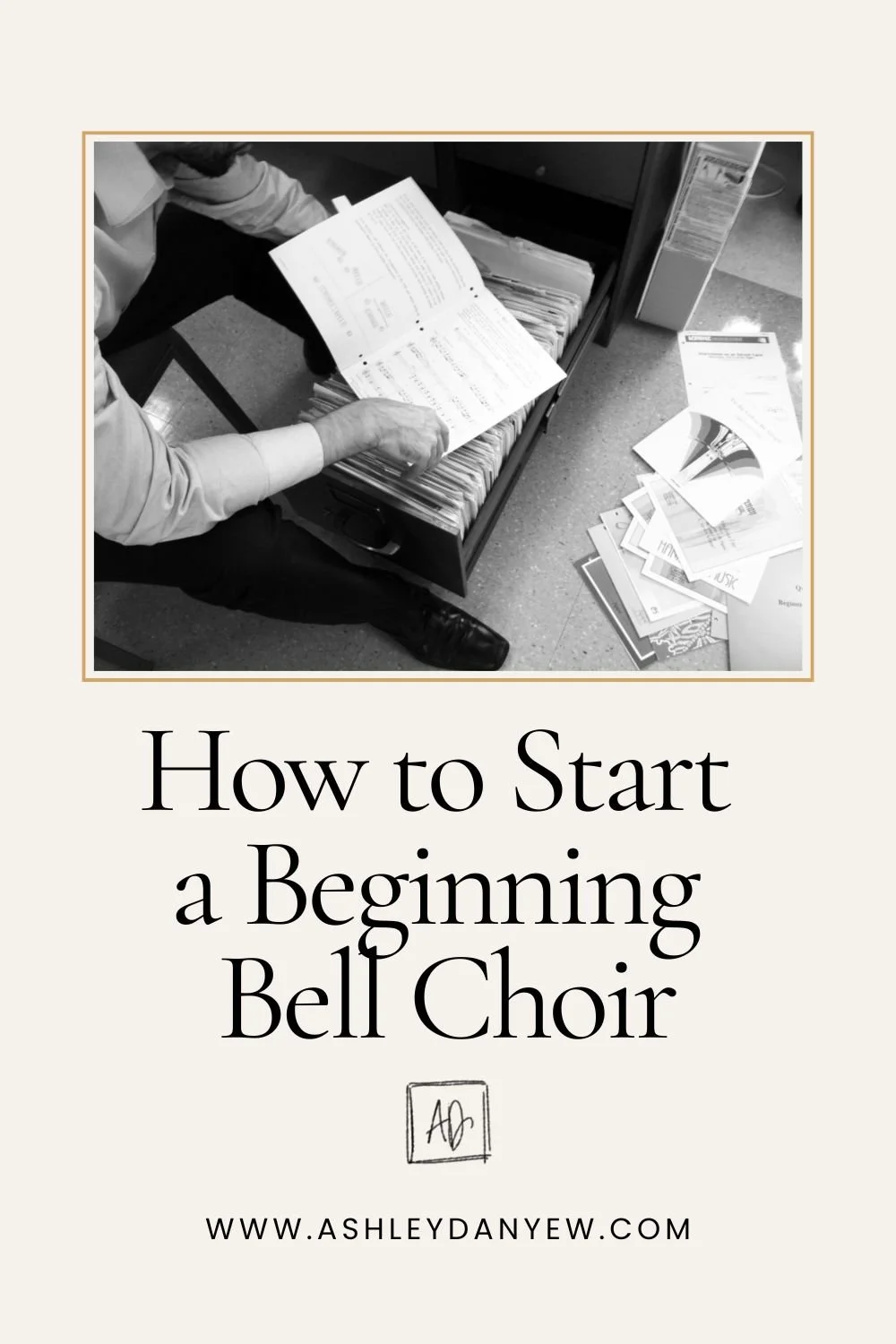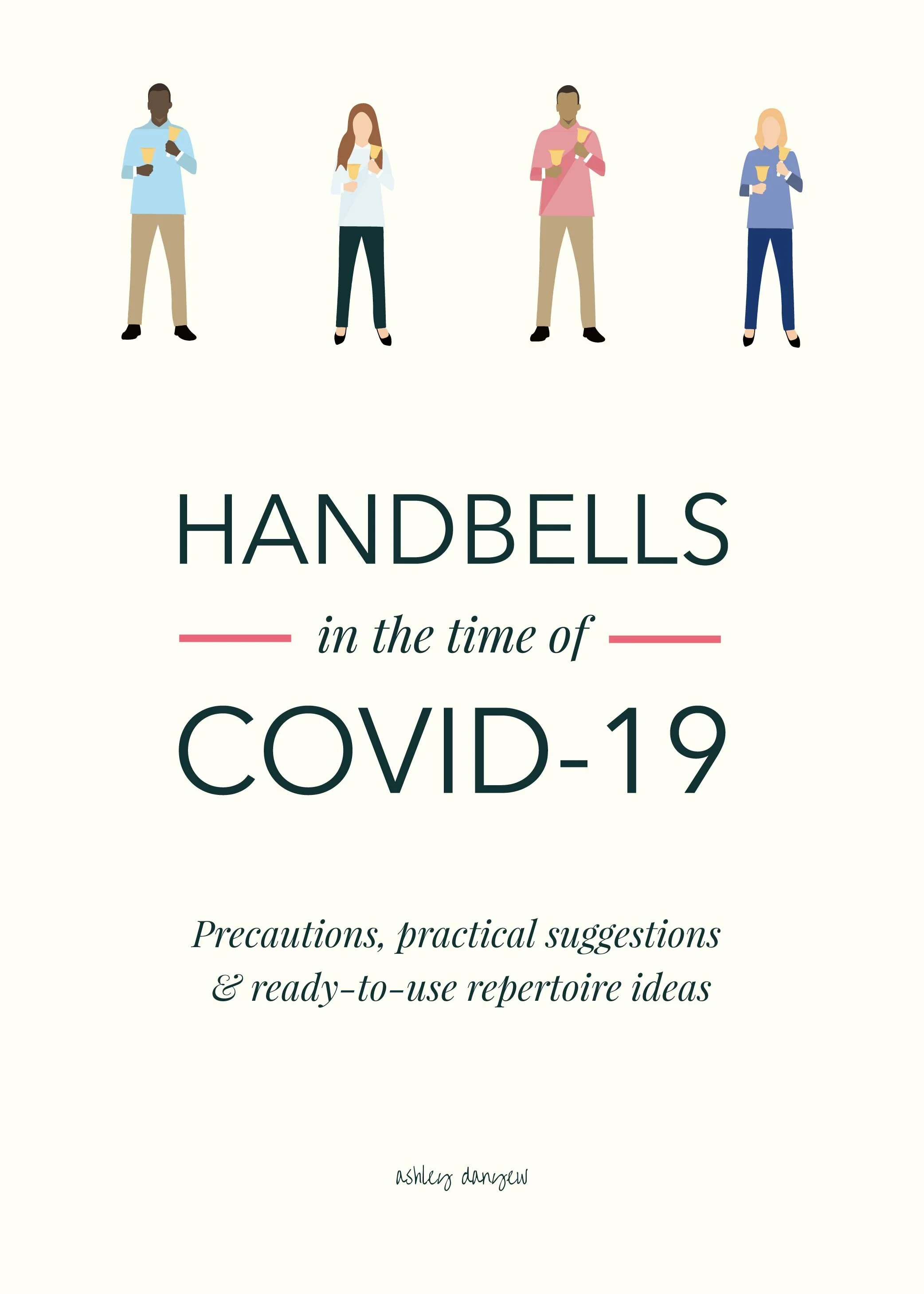Handbell choirs are a wonderful opportunity for community, creativity, and collaboration.
And starting a new group is much less intimidating than you might think.
Whether you’re a church musician, a classroom teacher, or a community music director, you can bring people together to make beautiful music—even if they’re mostly beginners. The key is choosing flexible repertoire, using thoughtful teaching strategies, and creating a welcoming, supportive learning environment for all.
In this post, you’ll learn: practical tips for organizing your group and setting a rehearsal schedule, how to choose flexible repertoire that offers the right balance of challenge and reward, and teaching techniques for developing musicianship skills and building confidence.
Whether you’re starting a new handbell choir or looking for ideas to refresh your current group, you’ll find strategies to make your rehearsals an enriching, rewarding experience.
Planning Your Rehearsal Schedule
One helpful way to ease into a new group is by framing it as a short-term opportunity instead of a year-long commitment. This lets you gauge interest, identify your most enthusiastic (and dedicated) participants, and keep yourself from getting overwhelmed or burnt out.
Consider starting with a 6-8 week bell choir (for example, November-December or during the season of Lent, building up to Easter). If that goes well, consider 2-3 sessions per year with a few weeks of break in between: perhaps one in the fall, one in the spring, and one over the summer.
Another thing to consider is when you rehearse. Try to schedule bell choir rehearsals on a day when other things are happening—another rehearsal, a mid-week meal, a book club or class, etc. I remember finding success having rehearsals on Wednesdays right before adult choir rehearsal. We encouraged people to come a little early and take part in both groups for a few weeks and it worked out great.
I encourage you to give everyone the opportunity to participate in bell choir, regardless of previous musical experience and/or reading skills. This makes planning a little more difficult, but choose a variety of repertoire and make a few different bell assignment options in advance to accommodate the people who come the first week.
Speaking of repertoire planning, let’s talk about how to choose music for your group.
Choosing Handbell Music
I recommend choose music that’s accessible, flexible, and rewarding for everyone in the group. Here are some helpful strategies:
Tip #1 - Get Them Playing right away.
If your group is open to everyone, a good place to start is with an introduction to basic ringing techniques. If you don’t know the reading level of the group (you haven’t screened or auditioned people in advance), I recommend planning a free improvisation activity (with everyone playing chord tones) to get the group playing and making music right from the beginning.
Teaching technique through playing and creating something that sounds good together in the first few minutes of rehearsal is a great confidence-booster!
Tip #2 - Look for simple, adaptable arrangements.
In terms of repertoire, consider music that can be performed with 2-3 octaves or a small number of players. Look for music with flexible bell assignment options (to accommodate ringers that can only keep track of one bell vs. two or more).
Tip #3 - Consider adding chimes.
If you have a set of chimes in addition to bells, consider doubling notes if you have extra players. This is a great way to add another tonal color, support your less-confident ringers by having someone else playing their part, and teach additional playing techniques. Chimes are also more kid-friendly in the beginning, so this is a great way to create an intergenerational group-ringing experience.
Tip #4 - Select a range of musical styles and difficulty levels.
This allows you to try a variety of things, figure out what works best for your group and what challenges them, and how to keep both beginners and experienced players engaged.
Suggested Resources & Beginning Handbell Repertoire
*Disclosure: I get commissions for purchases made through links in this post.
If you’re looking for ideas, here are a few tried-and-tested resources to consider adding to your library:
Begin to Ring (Thompson/Callahan) - a wonderful Level 1-2 method with settings that get progressively more challenging (very helpful for assessing your group’s playing abilities and reading level). Since these arrangements call for only a limited number of bells, consider adding chimes (to double the melody at pitch) to include more people if you end up with a bigger group. Al Zabel's Seventeen Handbell Processions is a similar resource.
Developing Coordination Skills (Michael Keller) - this is helpful for developing rhythmic independence. You can also notate a few rhythm patterns on a whiteboard rather than giving your ringers the printed notation.
Peal No. 1 from Hal Hopson’s The Creative Use of Handbells in Worship - an accessible and flexible piece for 9 bells (consider assigning one bell per person). You can also double an ostinato pattern with chimes, if needed.
Five Processionals (2-oct. bells) (Ashley Danyew) - this is a collection of processionals & acclamations I wrote for general or liturgical use, written for just 10-12 bells.
Twelve Bells for Worship (Patricia Sanders Cota) - a great resource for beginning groups (just 12 bells or 6 ringers). Again, you can double parts with chimes to add more players.
Remember, always purchase enough legal copies for everyone in your group (plus you as the director!). Alternatively, many publishers now offer digital downloads that include reproduction rights so you can make as many copies as you need.
For beginners, consider making rehearsal copies of the music to encourage people to mark their music (or color-code their part, if desired!).
One other Rehearsal tip:
Create binders for each ringer (or pairs, if you want them to share music) ahead of time. Include:
All the music they need
A sharpened pencil
A pair of highlighters if you want to encourage them to mark their music
A handbell notation reference sheet (like this one)
More Handbell Choir Resources
Teaching Strategies for Beginning Bell Choirs
If you’re new to teaching handbells, here are a few teaching strategies to help you get started:
Create a rehearsal plan. Outline warm-up activities, technique, music-reading exercises, and repertoire you want to get through during your time together. Get a rehearsal planner and weekly rehearsal template in the Handbell Choir Digital Planning Kit.
Start and end rehearsals on time. This shows that you’re committed to making the most of your time each week and that you respect everyone’s time.
Think outside the box. Playing handbells doesn’t have to mean standing behind a table or reading music. Consider teaching a few patterns by rote and having your ringers play a procession (like this one), chime the hour, or use the singing bell technique to underscore a reading. For more ideas, see this post: 11 Creative Ways to Use Handbells in Worship
Incorporate music education. Use this opportunity to teach your ringers how to read music, recognize patterns, develop their sense of rhythm and steady beat, learn to play in an ensemble, and develop their musicianship skills. This free set of rhythm pattern cards is great for rhythmic reading, improvisation, composition, warm-ups, and more.
Create a welcoming atmosphere. Consider having a small gift or handwritten note to make each ringer feel valued (like these pencils I made for our group one year).
I’d love to hear from you:
Have you ever directed or played in a bell choir? What was your favorite part? Share your stories in the comments.
























![Handbell Notation Guide [Infographic]](https://images.squarespace-cdn.com/content/v1/585c710603596e2c47dad93e/1491403915874-P2UH6FM8J1W1HM4UWP17/Handbell+Notation+Guide-02.png)


![The Joy of Children's Handbell Choirs [Video]](https://images.squarespace-cdn.com/content/v1/585c710603596e2c47dad93e/1482458472572-UQOTZ604Q6UKSIBZVYEZ/image-asset.png)










